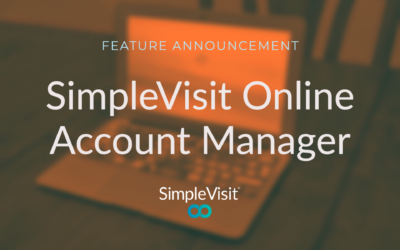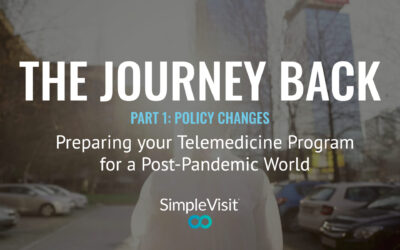
Reinvent Mental Healthcare: Become a Doctorpreneur
In the first article of this series, there was a call for caring, dedicated medical professionals to step up as change-agents to improve access to mental health care. Our country needs more people like you to pursue innovation in mental health care and dare to do things differently. Imagine how many more people you could help when you finally break free from the pack and begin to “Think Like a Startup.”
Poor mental health is commonly viewed as a culprit for the declining health conditions in our society. The evidence speaks for itself – what has been done isn’t working. Advancements in technology along with new policy across the country endorse telehealth as a key part of the solution. It’s time to use the available tools and take the leap. It’s time to become a doctorpreneur.
DOCTORPRENEUR:
“a health professional who has ventured into the field of entrepreneurship and innovation”
“Entrepreneur” has become a common buzzword with now many applications and meanings, so for the sake of clarity, we will use this one:
ENTREPRENEUR:
“a person who identifies a need and starts a business to fill that void, usually with considerable initiative and risk.”
It’s that last word that gets most of us tripped up: “risk.” No one likes the idea of risking anything, especially their livelihood. We posit, however, that the element of risk is what makes entrepreneurs so impacting – because they have something to lose. They have invested more than the average Joe…more time and energy, and more personal security – risk. But, the real heart of an entrepreneur is the element of meeting a need and filling a void. I think we could all agree that there is a gaping hole in our nation’s mental health care. This is evidenced by the January announcement from the National Safety Council that drug overdoses are now considered the #1 cause of unintentional death in the United States, over vehicle crashes and industrial machinery accidents. The driving need to fix what is broken, supply what is missing, and provide answers where there have only been questions are what defines an entrepreneur. The passion, not the pocketbook, is what makes the risk worthwhile and almost inconsequential to an entrepreneur.
However, at the end of the day everyone needs to make a living. It is a part of business, and as a doctorpreneur it’s no different. Entrepreneurship is also about taking risks in how you make the money, how you reach your goals, and being willing to do it on your own. SimpleVisit is driven to help healthcare providers like yourself confidently launch your telemedicine program. We are fulfilled when you are successful.
To Start a Startup
A doctorpreneur builds from the ground up, from an idea born out of a need too strong to ignore and a lifelong drive to bring healing. You are making a difference by creating or contributing to a solution. A doctorpreneur takes the raw materials of concept and uses them to craft a better way. Forming, managing, and owning the business allows you to be a better doctor because you can treat patients the way you always wanted to and the way they truly need. Likewise, your knowledge, experience, and skills as a doctor fuel your ability to run, improve, and succeed with the business because every decision you make is informed by them.
With this risk also comes reward. There are two phrases that define this aspect of doctorpreneurship:
“No pain, no gain.”
Without the sometimes difficult, scary, and exhilarating process of trying new things at personal expense, you will never succeed in fixing the broken parts of this field of medicine. It’s going to take someone willing to go through a little pain to gain the answers as to how to better treat our fellow humans who are hurting. You could do it the way it’s usually done, without taking too many chances – but is there any reason to believe that that will yield a different outcome than we are seeing now? Albert Einstein famously stated that the definition of insanity was doing the same thing over and over again and expecting different results.
As mental health practitioners, you definitely have reasons to take the plunge. With the 30 million deaths from overdoses worldwide and the average of 129 suicide-related deaths in America per day, there is more than enough reason to take a chance on a little pain.
“Shoot for the moon. If you miss, at least you will land among the stars.”
If you don’t “shoot”, you will stay in the exact same spot you have been in – where you feel frustrated, ineffectual, and burnt out. Just the act of taking that moonshot will rekindle your engines, and if you’re among the stars, you are that much closer to your final goal. And entrepreneurs know that everything that happens, good and bad, successes and failures, is not a prognosis of the future of your endeavor – it is merely a diagnostic measurement. It is data that is used to help narrow your focus, guide your decisions, and better your business so you can help more people. For that’s what you wanted to do in the beginning and the process of doctropreneurship can bring you back to that, while moving you forward in innovation in healthcare delivery, so as to not stay in a stagnant state of healthcare-insanity.
In fact, entrepreneurs know that failures lead to success. Think of the greatest entrepreneurs in history. Walt Disney was fired by a newspaper editor because “he lacked imagination and had no good ideas.” Both Atari and Hewlett-Packard rejected Steve Jobs and Steve Wozniak’s pitch about a personal computer. Henry Ford and R.H. Macy, both at the beginning and forefront of their fields failed five and seven times, respectively, before their eventual successes. Thomas Edison tried 9,000 times to create a battery before he succeeded. When asked about his lack of results he said, “I have gotten lots of results! I know several thousand things that won’t work!” All of these entrepreneurs, visionaries in their own right, knew that failures were just more details added to the blueprint for their eventual success. So, brave doctorpreneurs, do not fear the risk – you will be rewarded!
The First Steps
Research
The first part of being a doctorpreneur starting out is to do your research. Entrepreneur.com shares countless articles on the first steps to starting a business; one gives suggestions for questions to ask yourself when researching the market you are going into. Taking our lead from them, we present these:
1. Who are the population of patients you are trying to reach? How are other providers reaching those same people?
2. What could go wrong and how will you solve it?
3. Are there additional services that you could offer for less cost/more profit in addition to your main mental healthcare service?
4. What is your identity as a provider, and how does that inform how you want to provide care?
To further explain, Way to Wellville founder Esther Dyson, regarded as an innovator and leader in healthcare ventures, states that “When you start your business it generally has a single, clear identity – yours. It’s mission and culture reflect yours; it has your DNA.” Take some time to ponder those necessary questions: Who are you? Who do you want to be? For your patients, your society, your world? How can you use that to form the shape of your new practice, one that is unique to what is out there already?
Draft a Plan for Your Business
The next step is to make a plan. A business plan, yes, but more than that. Startup Health includes some nuggets of wisdom to consider when crafting a plan for your business:
- In an article written by the President and Co-founder of StartUp Health Unity Stoakes, he advises entrepreneurs to take advantage of new market forces when pursuing healthcare innovation, such as:
Integrating platforms already embedded in users’ lives (Apple, for example) and devices and processes already commonly used daily (tablets, smart phones, fitbits, video calling, etc.) opens the door to new patient behaviors and increased engagement – it’s easy for them and you. They suggest you “Design into the Fabric of Life.”
New shifting business models – move from a cost mindset to a longer-term investment mindset. What you spend money on is not a business cost but an investment into the future of your dream — “rethink who pays, how money flows, how pricing/payments are structured.” Some examples of how you can do this are by cutting out extra, extraneous links in the chain of authority (go-betweens) and leveraging already-available or free technology.
- The Executive Chairman of StartUp Health, Jerry Levin, has this advice: Be mission driven, guided by the impossible, and let your vision be long – 25-years long. Look into the future of where your dream is headed and what you can achieve in a bigger way, not just what you can do now.
- In an interview with the CEO of a social network centered around certain health conditions and goals shares helpful lessons learned from her launch. One lesson is to let “the lack of resources become the mother of invention.” See your obstacles not as stumbling blocks, but as ways to get better, work smarter, and discover something new, whether it’s a process or product. A lesson of her own that she shared was to “know your audience and customize and articulate for them.” Don’t go for flashy and new or for tried and true, go for what works for your practice model and your prospective patients’ needs.
Find Funding
Most entrepreneurs start by “bootstrapping” their venture; meaning they build their business from the lining of their pockets. Start-up costs are a one of the largest barriers for new ventures. A great thing about launching a virtual practice, though, is that there are relatively few startup costs allowing you to invest in customer acquisition more quickly. If you are in need of “seed money” for your launch, here are some ideas:
- SBA Loan – Find a good local bank and then agree to favorable yet realistic terms.
- Retainer Contracts – Lock in patients or care facilities that supply patients to a long-term agreement that ensures future revenue.
- Grants – Consider applying for grants for “free money” that align with your type of practice. View a list of telemedicine grant options at telemedicine.com/resources/funding
- Intrapreneurship – Utilize your current practice or work environment as a launching pad toward your goal. Many organizations are open to innovation from within to meet their overall objective.
Congratulations! You are joining a global movement to embrace technology as a way to improve the lives of friends and family who are hurting.
Within just this past year, Paul K., a Nurse Practitioner from the eastern shore of Maryland, broke from the mold just as you aspire to do now. He created an entirely virtual counseling practice from the comfort of his own home, using SimpleVisit’s telemedicine receptionist service to connect with patients throughout the entire state. His practice started with contracts to care for patients scheduled through county health departments then expanded to rural clinics and even patient’s homes. Paul credits the ease of jumping into this new venture to use of telemedicine technology and the helpful service provided by SimpleVisit.
You can take the leap like Paul. You can reinvent mental health care.
Next Up
Now that you know why and how to begin, the final article in this series will focus on best practices after the launch of your virtual practice.
If you’re ready right now, call us at 877-83-VISIT or email us at info@simplevisit.com to talk to us about how SimpleVisit can get you on your way to becoming a doctorpreneur of your own Startup practice today!
Introducing: SimpleVisit Account Manager!
Feature Release | 4 min read | August 20, 2020At SimpleVisit we are dedicated to helping healthcare providers offer telemedicine services in the most user-friendly way humanly possible. With that aim in mind, we are launching our new SimpleVisit Account Manager! This...
Using Google Duo for Telemedicine
Feature Release | 4 min read | July 17, 2020 Did you know that you can use common video calling applications for telemedicine appointments? You don’t have to purchase new equipment, learn new programs, or train staff on how to use a new application or EMR feature. The...
The Journey Back: Part 1
Allie Clark | 10 min read | June 30, 2020The world has changed drastically. Seemingly overnight, we were overwhelmed by a deadly pandemic with no end in sight. The economy, daily life, and, yes, medical care had been up-ended in the wake of COVID-19. But where fear...



